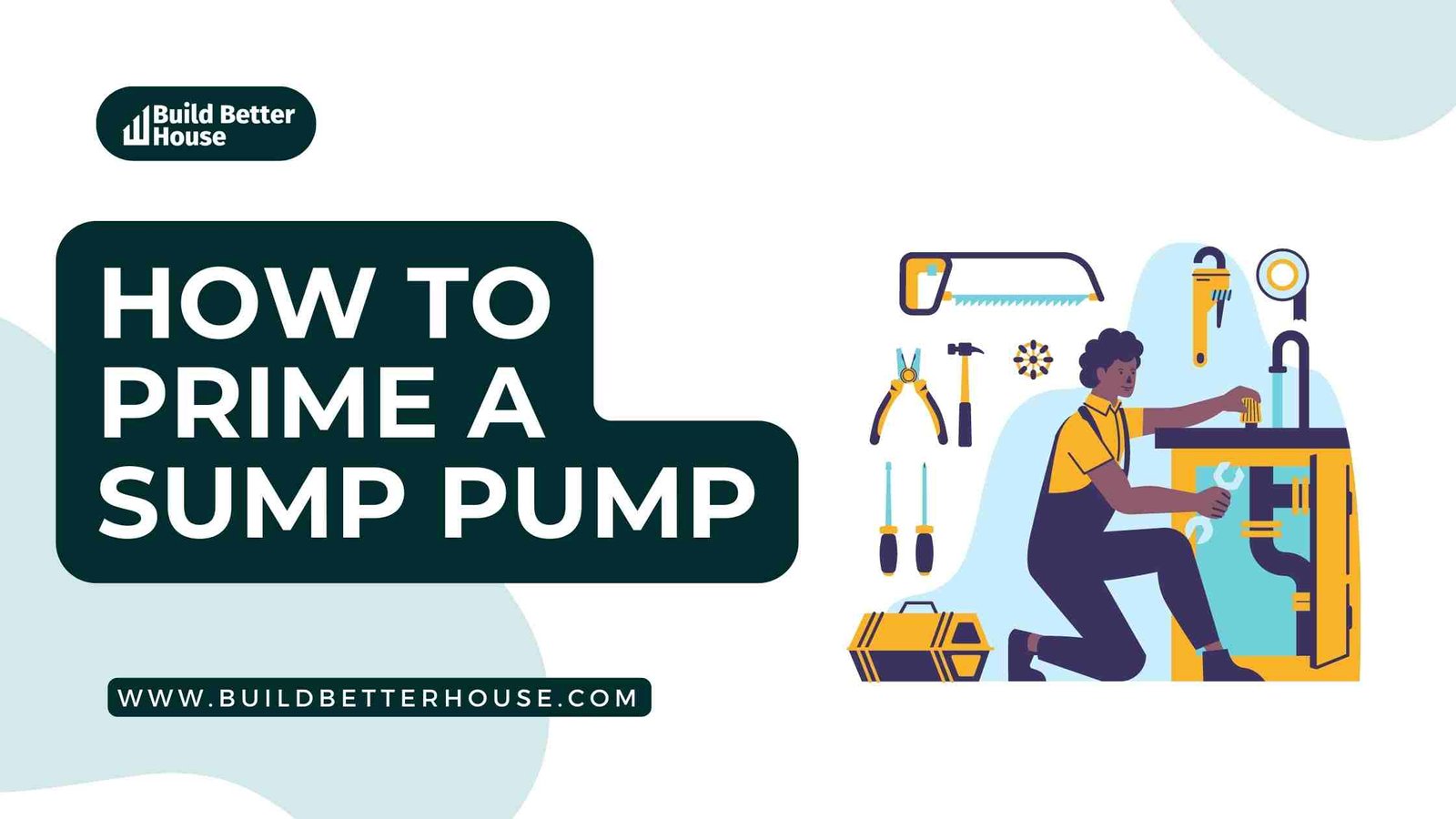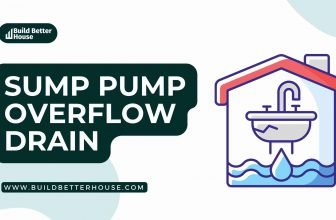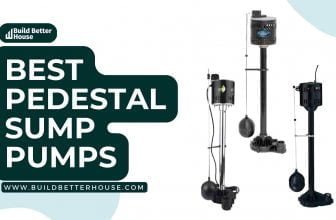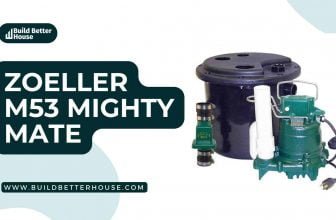How To Prime A Sump Pump: Everything You Need To Know

If you’re keen to take control of your home’s flood protection with the best sump pump, a step-by-step guide on how to prime a sump pump will surely help you.
Priming a sump pump is an easy and quick process, and it will ensure your pump is always ready to take on the job of pumping water out when needed.
When considering how to prime a sump pump, you must follow a few simple steps: checking the pump, adding water, and ensuring the switch is positioned correctly.
Read on to learn more about priming a sump pump, so it’s always ready to go.
Basics of Sump Pump
A sump pump is a water removal system that pumps water out of your basement and away from your home. Sump pumps are installed in a pit (known as a sump pit) near the lowest part of your home’s floor.
Sump pumps are often used with a water-detection system that alerts you when water levels are rising, so you can turn the pump on before any severe damage occurs.
Sump pumps are manually activated; however, some have an automatic float switch. This switch is commonly used when installing a sump pump in a hole at or below ground level. Others are surface-mounted and are frequently coupled with a sump pit. It’s critical to remember to prime the pump in the sump pump system before using it.
How to prime a sump pump: Necessity
It’s important to prime a sump pump to ensure it’s working correctly and ready to go when needed. A sump pump needs water to operate appropriately, so proper priming ensures that the pump can take on the job when water levels rise.
Some homeowners leave their sump pump running yearly since it’s a relatively low-cost and energy-efficient flood protection method.
However, this method isn’t recommended since it can be costly and cause the pump to wear out eventually. Instead, it’s best to prime a sump pump when water levels are at their lowest and then turn it off until it’s needed again.
How To Prime a Sump Pump: Steps
There are a few steps to follow regarding how to prime a sump pump. They include checking the pump, adding water, and ensuring the switch is positioned correctly. These steps will help ensure the pump is primed and ready to go when water levels rise.
Check the pump
Before priming a sump pump, it’s vital to ensure it’s working correctly. If not, a more significant issue may need to address so it doesn’t affect the pump’s ability to do its job. You can check a sump pump for proper operation in several different ways.
Make sure the pump is cycling on and off
If the pump doesn’t turn on, it could be broken. There may be a loose connection or a break in the wiring. These issues need to be addressed before priming and using the pump.
Listen for the pump’s sound
Sump pumps make different sounds, so you can tell if the pump is working correctly by listening to its sound.
Watch the pump’s impeller
If you can see the impeller moving, you can be sure the pump is working correctly. If you notice the impeller isn’t moving, it may need to tighten.
The above tips will assist you in checking the pump so that you won’t go wrong in your sump pump priming.
Add water
After you’ve checked your pump for proper operation, it’s time to add water to the pump. Adding too much water to a sump pump can cause it to break. You want to add only a little water, so start with a small amount and then increase it if needed.
Ensure your pump is turned off, and then fill the pump with water. You’ll need to fill the pit with water using a submersible pump. The pump will pull water from the pit, so the hole needs to be filled to the same level as the pump.
Make sure the switch is in the proper position
After adding water to the pump, you must ensure the switch is positioned correctly. The button tells the pump when to turn on, so you’ll want to be sure it’s in the correct position before priming it.
Some pumps have two or three settings, so be sure you’re putting the switch in the correct position for priming your pump. If your pump has a manual button, you can hold the switch in the “prime” position while adding water to the pump.
How to prime a sump pump: Signs
If your sump pump stops working, you can bet there’s too much water in your basement. In this situation, you need to find out where the water is coming from and make a few adjustments to stop the water from flowing into your basement.
- Check your water-detection system
If you have a water-detection system, it will alert you when water levels are rising. If there’s water in your basement, check your water-detection system to ensure it’s working correctly.
- Look for water sources
If your water-detection system needs to fix, you can still find where the water is coming from. Look for water coming in from the outside and ensure your gutters and downspouts are clean and flowing correctly.
- Check your sump pump
If there’s water in your basement and you have a sump pump installed, ensure it is functioning correctly and see that the sump pump isn’t clogged with debris.
With the proper knowledge, you can ensure your sump pump is ready to tackle any floods or water issues that may come up.
How to prime a sump pump: Tips for Maintenance
Once you’ve primed your sump pump, you’ll want to make sure you’re maintaining it properly to extend its life and keep it primed. Here are a few things you can do to maintain a primed sump pump.
- Clean your sump pump regularly
Cleaning your sump pump regularly can help make sure it’s always primed and ready to go when needed. You can clean your pump with a garden hose and a long pipe.
- Check the switch
Check the switch to ensure it’s appropriately placed during your regular cleaning. If you notice any issues with the button, you can contact a professional to have it fixed or replaced.
- Replace the float switch
If your pump has a float switch, you’ll want to check it regularly and ensure it’s working correctly. You should replace or adjust your sump pump float switch every five years.
- Check the pump’s wiring
Ensure the pump’s wiring is in good condition and isn’t frayed or exposed. If there are any issues with the wiring, you can have it repaired or replaced.
- Prime pump regularly
It’s essential to prime your sump pump regularly, even if it isn’t used. This will help keep the pump primed and ready to go.
Following these simple steps, you can easily prime your sump pump and ensure it works correctly. So remember to add this vital task to your maintenance routine!
Troubleshooting a Sump Pump
If you notice sump pump issues, you can check the pump to ensure it’s working correctly and isn’t clogged with debris. If the pump works, you may need to replace or repair the switch. If you need help troubleshooting a sump pump, here are a few resources.
Hire a Professional
If you can’t figure out what’s wrong with your sump pump, it’s time to call a professional. A professional can troubleshoot the problem and let you know what needs to be done.
Ask Around
Ask around if you need help figuring out what’s wrong with your sump pump. You can get a recommendation for a reputable contractor who can help you figure out what the issue is.
Wrapping up
A sump pump can be a great way to protect your home from flooding. However, a sump pump can sometimes be clogged or require other maintenance to keep it going correctly. When this happens, it can take much longer to start up, making it less effective at protecting your home.
Read more:
5 Best Sump Pump For Pool In 2022
Top 5 Under-Sink Sump Pumps Available In The Market
How Much Does Backflow Testing Cost? The Ultimate Guide
How To Stop The Pool Pump From Making A Humming Noise?
7 Best Hot Water Recirculating Pumps in 2023: Tested & Compared






